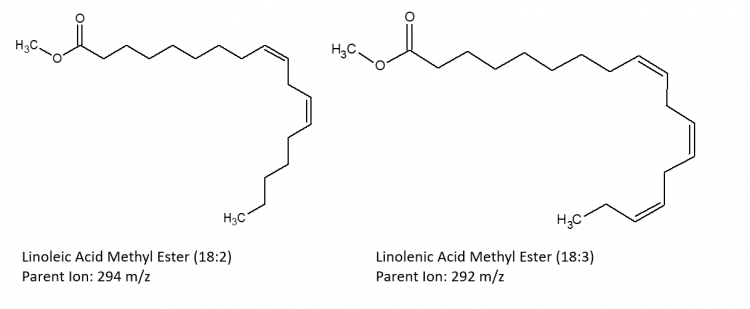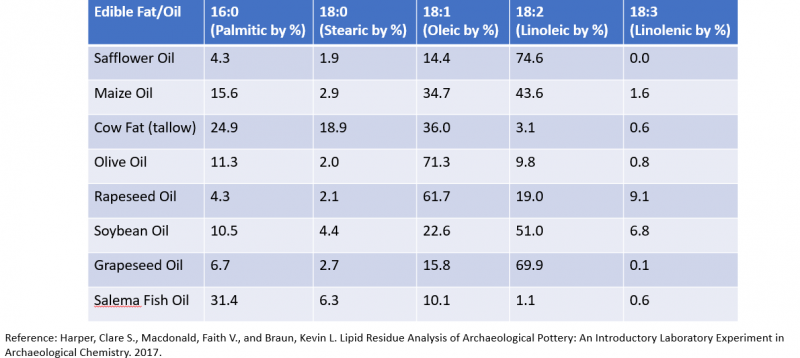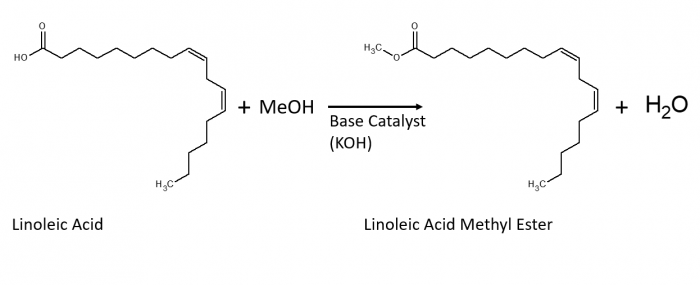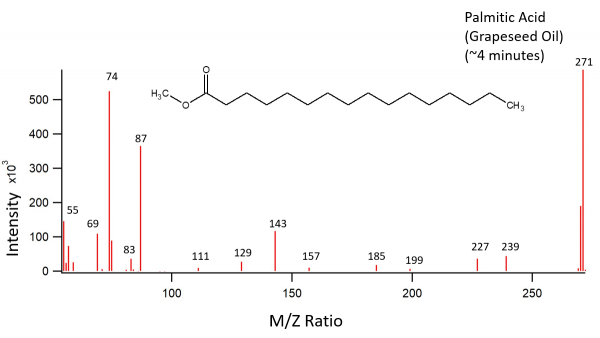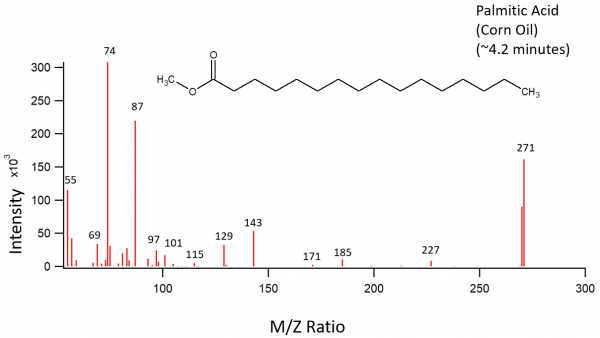Difference between revisions of "Fatty Acid Methyl Esters"
| Line 73: | Line 73: | ||
====Sunflower Oil Data==== | ====Sunflower Oil Data==== | ||
| + | |||
| + | Sunflower oil was treated as described above. The transesterifcation products were palmitic acid, linoleic acid, and an unknown acid. The third peak on the chromatogram should have been an oleic acid peak according to previously recorded fatty acid contents of corn oil. Instead, the third peak is an unknown fatty acid with a fatty acid methyl ester parent ion of 280 m/z. | ||
{| | {| | ||
Revision as of 03:55, 20 April 2021
Introduction
The fatty acid composition of a sample can reveal the origins of said sample. Different combinations of fatty acids are associated with different types of oils. This information can be especially useful in the field of archaeology. Dried clay holds lipid residue fairly well, so if a clay pot is crushed up and prepared for GC-MS analysis, the fatty acid composition of the oils in the clay can be discovered. This process can also be carried out with modern cooking oils to determine the different fatty acid composition of different oils or even of different brands of oil. This project is ideal for someone who is just beginning to conduct experiments that require GC-MS analysis, as it allows the person to gain experience in developing methods for data collection as well as allows them to gain experience analyzing mass spectra.
Fatty Acid Methyl Ester Structures
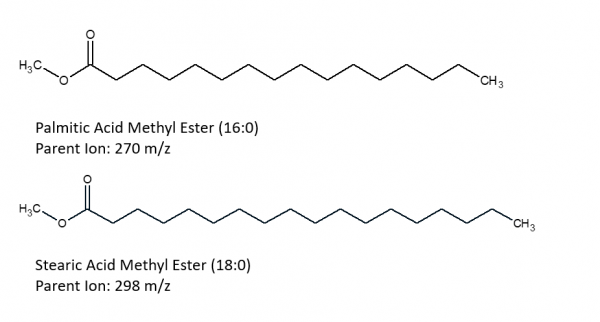
|
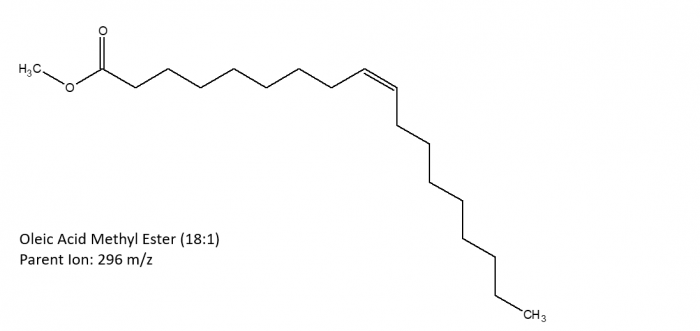
|
Significance of Fatty Acid Methyl Esters
Transesterification
Transesterification is the process of converting a carboxylic acid to an ester. The methyl from the methanol group is added to the carboxylic acid of the fatty acid to create a fatty acid methyl ester. This process is necessary to create a more volatile compound for GC-MS analysis.
Methods and Materials
Materials
Samples
All samples were obtained from Monmouth College's nutrition laboratory. The grapeseed oil was the brand Carlini. The sunflower oil was virgin sunflower oil of the brand Authentic Menu. The corn oil was "pure" corn oil of the brand Essential Everyday.
Chemicals
All reagents were purchased from Millipore Sigma.
Sample Preparation/Trasesterifcation
200 ul of each sample was combined with 40 ul of anhydrous methanol into a microcentrifuge tube. Then 4.3 ul of 5 M KOH was added to the top methanol layer to act as a catalyst for the reaction. The microcentrifuge tubes were then sonicated in an ultrasonic bath for 30 minutes. After being removed from the bath, 200 ul of 0.1 M acetic acid was added to each microcentrifuge tube to neutralize the base catalyst. Then each tube was centrifuged at 6,000 rpm for 5 minutes.
Preparation of sample for GC analysis
After centrifugation, 40 ul of the top layer of each solution was removed and added to a GC vial. Each vial was then diluted with 40 ul of pentane for GC-MS analysis.
Results
GC-MS Analysis
GC-MS Method for the Analysis of Fatty Acid Methyl Esters:
Grapeseed Oil Data
Grapeseed oil was treated as described above. The transesterifcation products were palmitic acid, linoleic acid, and oleic acid. The oleic acid peak was much smaller than expected. While we have no definitive answer as to why this peak was so small, one theory is that the grapeseed oil was old and had undergone oxidation reactions.

|

|

|
Corn Oil Data
Corn oil was treated as described above. The transesterifcation products were palmitic acid, linoleic acid, and an unknown acid. The third peak on the chromatogram should have been an oleic acid peak according to previously recorded fatty acid contents of corn oil. Instead, the third peak is an unknown fatty acid with a fatty acid methyl ester parent ion of 280 m/z.
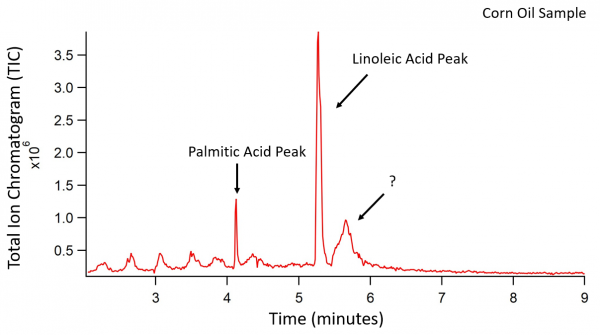
|
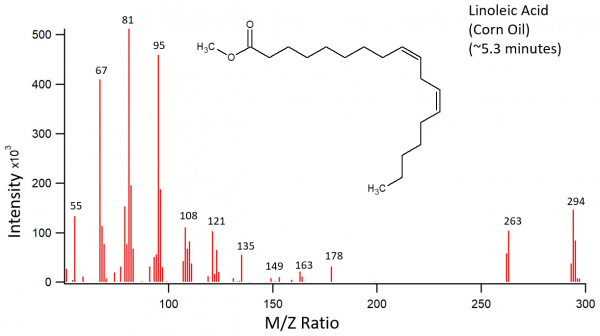
|
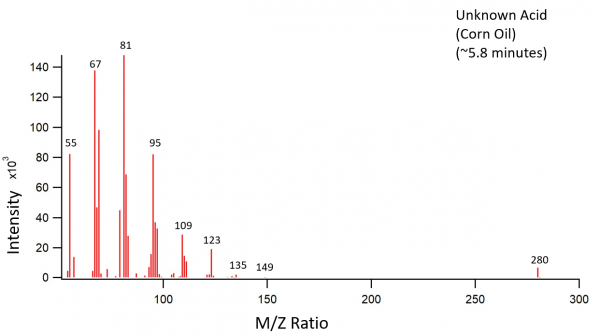
|
Sunflower Oil Data
Sunflower oil was treated as described above. The transesterifcation products were palmitic acid, linoleic acid, and an unknown acid. The third peak on the chromatogram should have been an oleic acid peak according to previously recorded fatty acid contents of corn oil. Instead, the third peak is an unknown fatty acid with a fatty acid methyl ester parent ion of 280 m/z.
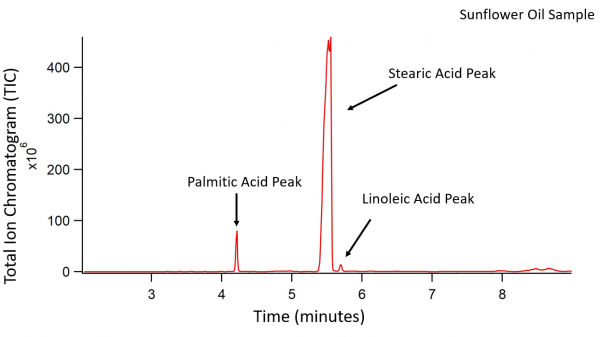
|
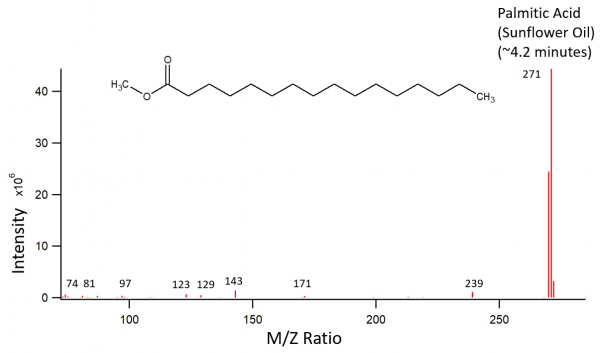
|
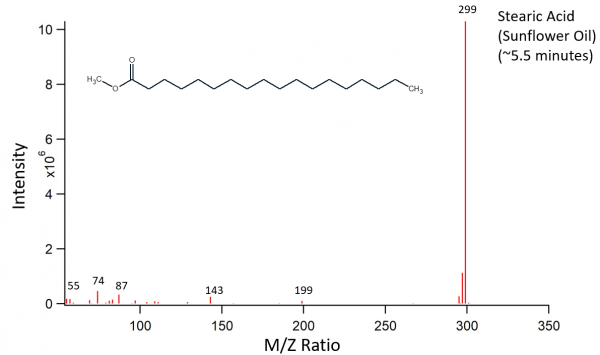
|
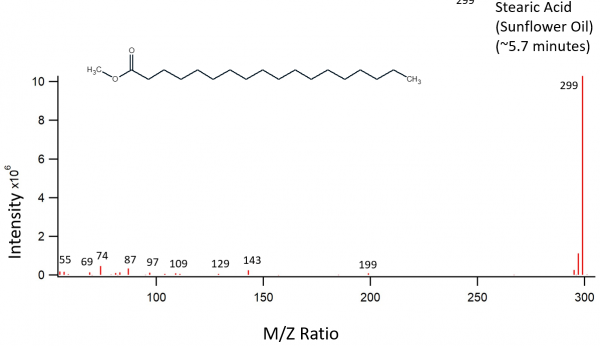
|
